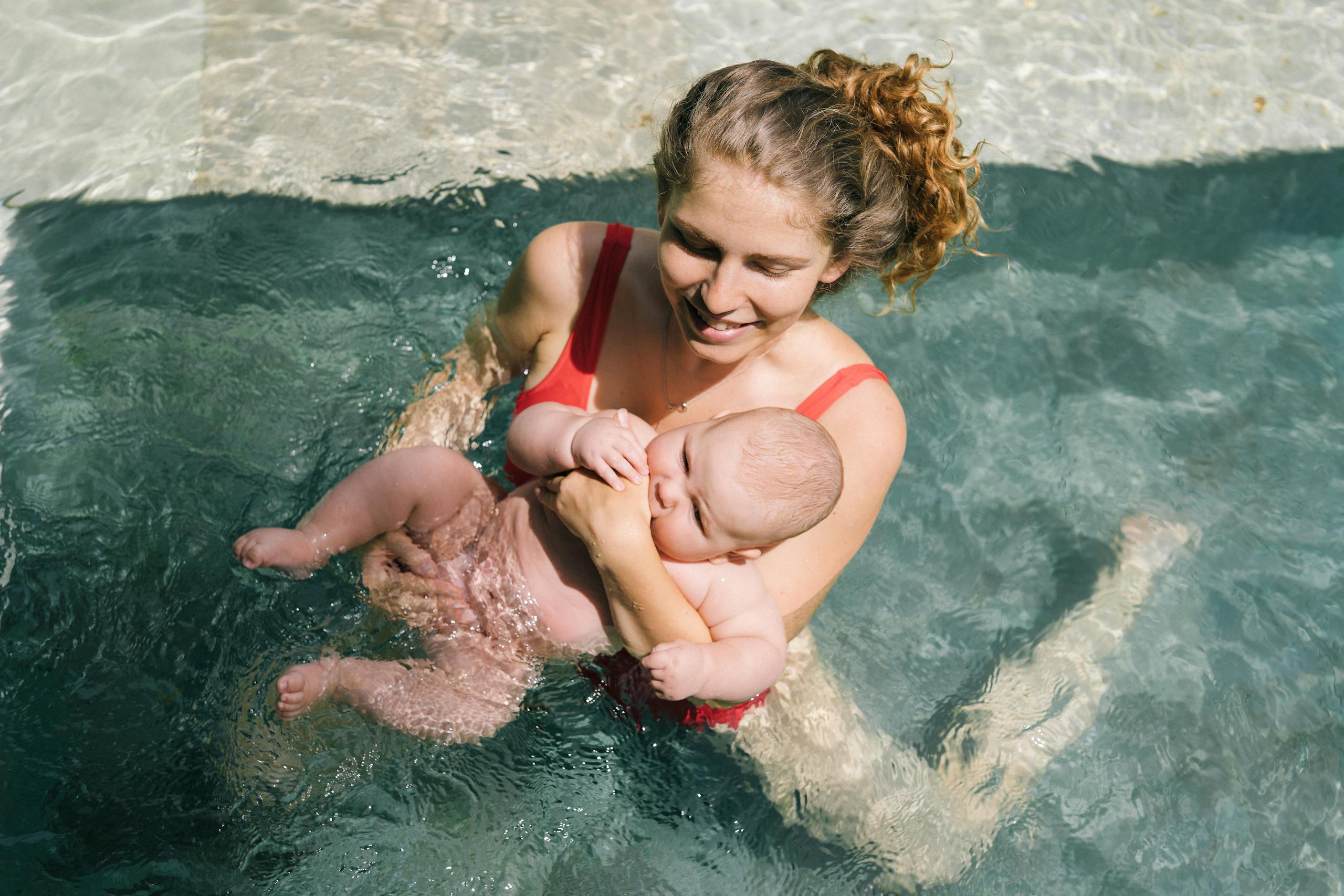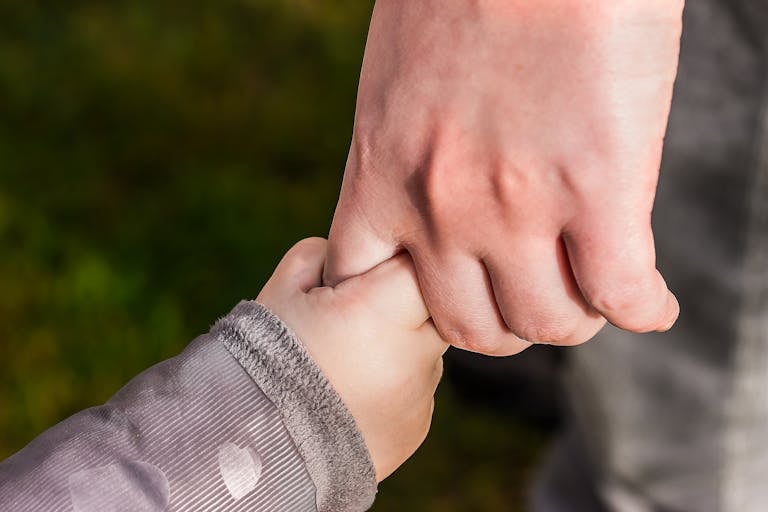Curiosity, anxiety, fascination—these feelings often swirl in the minds of parents when witnessing their little one “swimming” almost automatically in the bath, as if water had awakened ancient instincts. It feels almost magical: a newborn’s face touching the water, limbs moving in a near-synchronized dance, with breath seemingly held naturally. Naturally, the questions come rushing in. Can a baby really swim? Is this reflex a sign of healthy development—or something to worry about if missing or persistent? Above all, how do you support your child’s growth, gently and safely, in those early aquatic adventures? The swimming reflex holds these answers, weaving together neurobiology, sensory experiences, and infant well-being. Let’s unravel it, one layer at a time—combining science, empathy, and practical wisdom, so you can make every splash a safe and positive moment for your child.
Swimming Reflex in Infants: Origins and First Observations
Swimming reflex—also referred to medically as the diving reflex—unfolds as a captivating, involuntary phenomenon in newborns, visible from birth up to about six months of age. The instant water brushes an infant’s face, an automatic sequence launches: breath-holding (apnea), slowing of the heartbeat (bradycardia), and those remarkable arm and leg motions echoing the basic strokes of swimming. You might spot this during a calm bath or gentle splash—your child’s glottis closes, airways protectively sealed, and their movements seem far beyond conscious control. This early response isn’t unique to humans; various mammals possess these same hardwired mechanisms at birth, a shared legacy of evolutionary adaptation.
Don’t mistake these reactions for swimming mastery, though. The swimming reflex isn’t a sign your baby can survive in water or float independently. It’s a protective, short-lived instinct—a legacy designed to conserve oxygen, regulate blood flow, and shield the lungs should the face immerse in water unexpectedly. As the newborn brain matures, this reflex fades, surrendering to voluntary movements guided by intention and learning.
Medical Science Behind the Swimming Reflex
Delving into physiology, the brainstem is the command centre orchestrating the swimming reflex. When water stimulates receptors in the baby’s face, intricate pathways prompt instant apnea (breath‐holding), rhythmic limb movements, and a deliberate slowing of the heart rate. Blood supply is redirected towards the vital organs—the brain and heart. In parallel, the glottis closes, preventing water aspiration and diverting liquid safely to the stomach (if swallowed), instead of risking entry into the lungs.
Compare this to other primitive reflexes—each with its distinct signature. Think of the Moro reflex (startle and grasp reaction), the Landau reflex (aiding posture), or the gag reflex (airway protection). The swimming reflex, in concert with these, marks a well-tuned and developing nervous system, priming the path for future gross motor activities. Medicine values these signs as indirect evidence of healthy neural function in the months after birth.
Purpose: What the Swimming Reflex Reveals About Development
Consider the swimming reflex a physiological litmus test—an outward expression that the nervous system’s wiring operates as expected. Its presence reassures, hinting at normal transition from primitive, automatic patterns to voluntary control. Rubbing your baby’s toes in bath water, watching those instinctive kicks and splashes? It means their body is processing and responding to new sensory environments, rehearsing for milestones yet to come—like sitting tall, crawling with determination, or toddling after a favorite toy.
Not all babies display the reflex with the same vigor or at the same moment, which is why paediatricians rarely use it in isolation to judge neurological maturity. Instead, it’s observed as part of a suite of early responses, fading gracefully by around four to six months of age.
Developmental Timeline: Emergence to Integration
Gestational age matters here: the blueprints of the swimming reflex can be traced as early as 18 weeks in utero. By birth, it comes to the surface, strongest in the first months. Progress is not a strict clock—some newborns show it faintly, others quite powerfully, but by the end of the sixth month, most have transitioned. The upper brain regions, increasingly in command, gently overwrite these responses with voluntary, learned control.
What if the reflex lingers, or fails to appear? Occasionally, persistence beyond six months might raise questions about smooth neurological integration—especially if coupled with asymmetrical movement (for example, if only one arm or leg moves consistently) or delays in other motor milestones. In such cases, a gentle discussion with a paediatrician is reasonable, as early intervention supports optimal development.
Observing and Testing the Swimming Reflex: Safe Approaches at Home
Parents, eager to see the swimming reflex in action, may wonder about safe ways to observe it. Here, caution and gentleness must come first. Warm, shallow water (37°C/98.6°F), soft lighting, and secure arm support create the best environment. Lower your baby tummy-down, support the head, and watch—there’s no need for submersion or forced movement. The right signs? Coordinated, relaxed strokes of arms and legs; a brief pause in breathing; a sense of play and curiosity. If your baby appears stiff, anxious, or moves irregularly, stop at once.
Never leave a baby unattended around water, not even for an instant. Avoid plunging the face. Trust your intuition—if a moment feels off, comfort your baby and return another time. Positive association with water is built gently, never through stress or surprise.
Clinical Significance: When to Seek Guidance
Absence or unusual persistence of the swimming reflex—especially past six months, or when movements appear lopsided—can warrant a thoughtful conversation with your healthcare provider. While individual variation is to be expected, abrupt loss or pronounced delay may reflect underlying issues with motor pathways or integration of reflexes. A paediatric neurologist, physiotherapist, or child development specialist can offer guidance, reassurance, and support programs tailored to your child’s needs.
Medical professionals may assess the reflex alongside others, considering the “big picture” of motor and sensory skills, growth trajectories, and family history. Early attention supports the healthiest outcomes.
Water Play for Motor Development: Fun and Foundation
Let’s talk solutions and daily life. Even absent dramatic “swimming,” gentle water activities carry genuine developmental benefits. A warm bath can serve as both laboratory and playground, stimulating the vestibular system (which contributes to balance and spatial orientation), refining coordination, and fostering secure attachment through physical closeness. Playful splashing, chasing floating toys, letting water trickle gently—every moment nurtures proprioception (body awareness) and confidence.
Some parents choose to explore group activities—baby swim classes led by qualified instructors, for instance, beginning around six months. Approaches here mix fun, sensory input, and socialization, always emphasizing safety and comfort above performance.
Aquatic Safety: Balancing Curiosity and Care
Many parents, mesmerized by the naturalness of the swimming reflex, wonder whether it endows protection. The answer is unequivocal: it does not. A baby, though equipped with the reflex, cannot float independently, surface for air, or understand water’s risks. All water play, even at home, demands unwavering supervision.
Essential safety measures:
- Always hold your baby firmly and remain within immediate reach.
- Use only water warmed to body temperature.
- Prefer shallow baby pools or bath tubs.
- Skip face immersion, unless under direct, expert guidance.
- Clear all water from bathtubs after use to prevent accidental slips.
Prioritise comfort—watch for signs of fatigue, chill, or distress, and end the activity if they arise.
Beyond Reflex: Lasting Benefits of Early Water Play
Moving past the swimming reflex, early water experiences enrich a child on many fronts. Gentle movement in water boosts muscle tone, sharpens sensory processing, and may even calm a fussy stomach or soothe sleep troubles. The gentle buoyancy and resistance unique to water allow for muscle use without strain, offering benefits for both typically developing babies and those in therapeutic programs.
Ongoing research is delving into questions of how aquatic intervention supports long-term motor skills, particularly for those with developmental delays. Water-based therapy is already used by physiotherapists for exactly this reason, taking advantage of the element’s properties to motivate and integrate primitive reflexes like swimming.
Learning to Swim: From Reflex to Skill
The transition from reflexive paddling to skilled swimming is neither automatic nor universal. Children typically begin acquiring true swimming skills from three to five years, when voluntary control, muscle strength, and cognitive understanding are mature enough to handle coordinated strokes and safety techniques. Early positive experiences foster confidence and curiosity—foundations for later learning—but don’t ensure earlier mastery.
If your baby shies from water, there’s no urgency. Respect, playful exploration, and a soft pace are all that’s needed. Each child’s comfort and timing is their own.
Key Takeaways
- The swimming reflex is a temporary, instinctive response that safeguards newborns for brief moments in water, integrating breath-holding, bradycardia, and arm–leg motion.
- Its presence from birth to about six months hints at healthy neurological development but does not grant genuine swimming ability.
- Safe, gentle water play supports sensory and motor development and strengthens parent–child bonds—without rushing swimming skills.
- If the swimming reflex is absent, lingers unusually long, or appears uneven, paediatric consultation helps clarify and support healthy development.
- Resources and professional care exist for every family—download the application Heloa for personalised advice and free health questionnaires, making your parenting journey a little lighter and better informed.
Questions Parents Ask
Can babies really swim because of the swimming reflex?
The movements you see—those coordinated kicks and strokes—spring from the swimming reflex, not conscious effort. Babies cannot keep themselves afloat, breathe regularly underwater, or judge aquatic danger. The reflex looks impressive, but offers only brief, automatic protection, fading as voluntary movement develops. Never rely on it for water safety.
Is the swimming reflex unique to humans, or do other animals have it too?
Not at all unique to humans! Seals, dolphins, and several land mammals show similar reflexes at birth. These organisms benefit from breath-holding and bradycardia when submerged. In humans, it’s an evolutionary gift for the early months—helpful, but short-lived.
At what age does the swimming reflex disappear, and what does it mean if it lasts longer?
Commonly, the swimming reflex fades between four and six months, making room for intentional motor actions. If it hangs on well past this window, or the baby’s movements seem uneven or weak on one side, it may be worth talking to your paediatrician. Usually, though, children integrate such reflexes in their own time—variability is part of nature. For reassurance and guidance, professionals are always ready to help.









